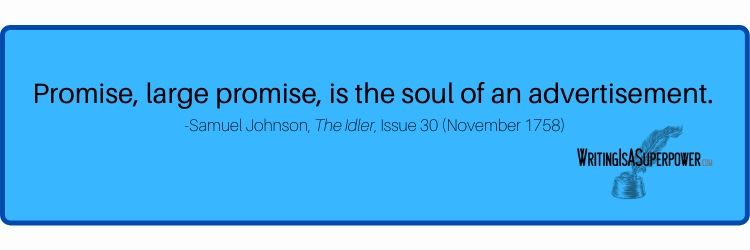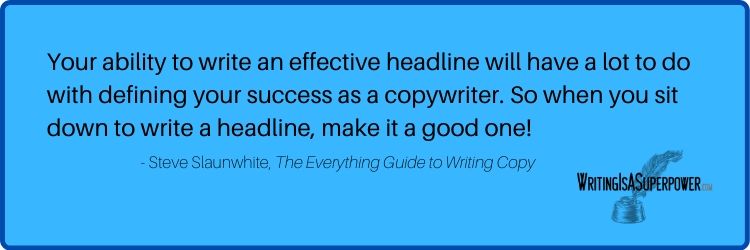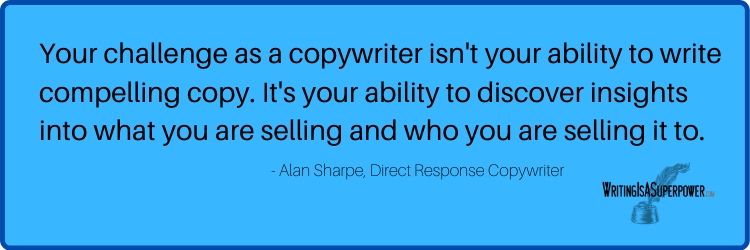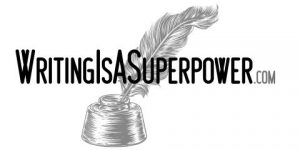
In Part 1 of the Free Copywriting Course, you discovered how power words to supercharge your writing, how good copy isn’t a battle of wills but a pleasant seduction, and how to tap into the dreams and desires of the target audience.
In Part 2, you learned how to inject emotion into your copy, how to create a customer persona, how to plan a copywriting project, and how to write a killer CTA.
In both Part 1 and 2, you studied the recommended sales pages and saw real-life copy in action.
If you haven’t completed Part 1 and 2, including studying the recommended sales pages, do that now, because each lesson builds on the one before it.
Use the links below to go to Part 1 or 2 if you haven’t completed them.
In Part 3 of the Free Copywriting Course, we look at powerful copywriting formulas, plus, how to write headlines and two simple ways to become a better writer.
Copywriting Formulas.
Copywriting is more craft than art, although creativity is in the mix. Through the years, ad men and professional copywriters have developed “copy formulas” for structuring sales copy.
As a copywriter, don’t try to re-invent the wheel. Instead, build on what has proven to work for copywriters through the years.
The formulas listed here have been around for ages because they save the writer time and because they get results. Use them to your advantage.
When you use a proven copywriting formula, you can complete projects more quickly and know they have a high probability of succeeding.
There are dozens of copywriting formulas. It seems every teacher has their favorite, and from time to time, a specific one is wildly popular among writers.
For a beginner, the dozens of formulas in the industry might be confusing.
It’s essential to keep things simple, so in this course, I’ll introduce you to only four formulas.
These may be all you ever need because they are so versatile.

Four Essential Copywriting Formulas.
- AIDA
- Motivating Sequence
- Bob Stone’s Gem
- PAS
Essential Copywriting Formula #1: AIDA.
AIDA is probably the most well-known copywriting formula. It’s the granddaddy of all formulas, and some might call it the “Master Formula.”
AIDA = Attention, Interest, Desire, Action.
AIDA almost always works. If you get the prospect’s attention, build their interest in what you’re pitching, stoke their desire to buy it, and then inspire them to action, you will get results.
However, as copywriter Steve Slaunwhite points out in The Everything Guide to Copywriting, AIDA fails to show us HOW to get the prospect’s interest and build desire.
That’s why we need another formula.
AIDA is most helpful when evaluating your copy AFTER you’ve written it.
Use AIDA to check you’ve covered all the bases, but first write your copy using a more exact formula like the Motivating Sequence.
Essential Copywriting Formula #2: The Motivating Sequence.
If the copywriting gods ruled that I could only use one copywriting formula for the rest of my career, I’d chose the Motivating Sequence.
Bob Bly, legendary copywriter extraordinaire, and the late writing consultant, Dr. Gary Blake, Ph.D. developed this formula. Both men have decades of writing and teaching experience.
I think it’s perfect.
The Motivating Sequence formula hits all the necessary persuasive buttons. The formula is simple and versatile.
It covers everything in AIDA, but it’s much easier to use, AND it guides you step by step through the process of planning and executing your copy.
First, we’ll look at the formula and then discuss each step in it.

The Motivating Sequence Copywriting Formula.
- Get Attention
- Identify the problem or need
- Position your product as the solution
- Prove your product is the best solution
- Invite the reader to take action.
Get Attention.
It’s up to the headline to grab and hold the prospect’s attention. Focus the headline on the most substantial benefit your product or service offers.
Some writers prefer to save the strongest benefit until later in the copy. They might even put it at the end to create a climactic finish.
The problem with this approach is if you don’t capture the prospect’s attention immediately with a strong headline, they will never get to the end of the copy.
Hook them with your most significant benefit in the headline. Tell them immediately what’s in it for them.
When you showcase your product’s greatest benefit, you give the prospect the best reason to go deeper into your copy and learn more.
Identify the problem or need.
Years ago, when I was first learning sales, our top salesman gave me a bit of advice. He said, “You can’t save them if they don’t know they’re lost.”
It was his way of reminding me to sell the need.
The Motivating Sequence addresses this same issue. It reminds us, as copywriters, to show the prospect why they need the product or service we’re pitching.
Products or services exist to solve a problem or to fulfill a need, and it’s your job as a copywriter to remind the prospect why they need what you’re pitching.
Dish soap solves the dirty dish problem, mouth wash solves the bad breath problem, and a tax filing service solves a tax filing problem.
However, sometimes the need for the product or service isn’t evident to the prospect, or they aren’t aware such a product or service is available.
Or, they don’t realize how they can benefit from it.
The second step of the Motivating Sequence is to show the prospect why they need the product or service you’re pitching.

Position your product as the solution.
Now that you’ve convinced the prospect they have a problem, you must immediately position your product as the solution.
Positioning your product as the answer to the prospect’s problem or need may only take a sentence or two.
Then, you must prove to the prospect that your product or service is the best solution.
Prove your product is the best solution.
Merely claiming your product can do the job isn’t enough. That’s just bragging. Now, you must prove to the prospect that your product or service can indeed help them.
But how do you do it? How do you get the prospect to believe your product or service is what they need?
An excellent way to start is to show the benefits of your product or service. Paid word pictures of them enjoying your product.
Another way to prove your product is the answer to their prayers is testimonials. Testimonials are so powerful you should use them whenever and wherever you can.
When third parties sing the praises of a product, people listen. Through testimonials, the target audience can see how others are benefiting from the product.
Invite the reader to take action.
At the end of your copy, invite the prospect to take action. Always. It’s the equivalent of asking for the sale.
Everything about your copy should move the prospect psychologically, emotionally, and intellectually to take action.
Tell the target audience what you want them to do; fill out a form, click a button, buy the product or service.
Make it simple for them to take action. Where possible, give the audience an incentive to act now: a money-saving coupon or code or bonus.

Real World Copy: The Motivational Sequence
When I wrote the landing page for The Easiest Writing Career, I used the Motivational Sequence combined with a story.
Open The Easiest Writing Career landing page in a new tab and follow along.
After getting the reader’s attention, I tell the story of how I got started as a writer, then segue back into the Motivational Sequence.
Through story, I share the problems and frustrations of writing professionally and how there’s a better way to make money as a writer.
Then, I show the reader how I’m available to help them master the Easiest Writing Career when they join my community.
I position myself and the community as the answer to the reader’s desire to make money as a writer.
And I give them proof in the form of testimonials and a screen capture of a member earning $12,000+ a month!
Finally, near the end, I take away all risk. It’s a free trial membership. Then I tell the reader to join now and present a link to where they can get started for FREE.
Essential Copywriting Formula #3: Bob Stone’s Gem
Created by Direct Marketing Pioneer, Bob Stone, his “Gem” offers detailed guidance for writing compelling copy. Do you see the similarities between Bob Stone’s Gem and Bob Bly’s Motivating Sequence?
Follow the formula step by step, and you’ll have a solid first draft.
Bob Stone’s Gem
- Begin with the product or service’s most significant benefit.
- Expand on the benefit.
- Tell the target audience what they will get. Include features and benefits.
- Prove product claims with testimonials and endorsements.
- Remind the audience what they will lose if they don’t accept your offer now.
- Restate the product’s strongest benefit.
- Tell the audience to act now and give them a crystal-clear logical reason why they should.

Essential Copywriting Formula #4: PAS
PAS is an excellent formula for writing sales pages, email sequences, and social media content. There is no end to the many projects that would benefit from PAS.
PAS stands for:
- Problem
- Agitate
- Solution
We humans are built for pleasure and will go to extremes to avoid pain. And, here’s the interesting thing about pain, our perception of it can be amplified or diminished by mere words.
PAS is a favorite of copywriter Dan Kennedy, legendary copywriter, founder of Magnetic Marketing®, and the NO BS book series.
Mr. Kennedy says PAS is the most reliable sales formula ever created. Use this simple formula like a step-by-step template.
Begin by spotlighting the prospect’s problem—no need to elaborate at this point. A single sentence will do.
Then, agitate the problem by tapping into an issue that creates anger or resentment in the prospect.
Some might call this step “rubbing salt in their wound,” which sounds just awful to me, but it makes a point.
Keep in mind; you can overdo the agitation step. Avoid torturing the audience. Instead, commiserate with them. Show you understand their pain.
The first two steps set you up to present the solution, which, of course, is the product or service you are pitching.
Real World Copy: PAS
Weight loss is a pain for many of us.
The sales video for the Weight loss product Lepitox begins by telling how the narrator saved his wife’s life.
Click here to open the Lepitox sales video in a new tab and follow along.
Immediately, the sales video presents the frustration of trying to lose weight. It then agitates this pain with images of an overweight woman who is miserable.
Meanwhile, the narrator tells of the life-threatening struggle his wife had with her weight.
“She’s tired. She aches. She’s hungry and exhausted. Every morning the scale never changes. She’s a prisoner of her own body fat.”
Note how the narrator continues to paint emotionally charged word pictures of Grace’s weight loss struggle.
After agitating the problem, the narrator then introduces the solution, a powerful 5-second water hack that melts away two pounds of body fat overnight.
Watch the sales video and see how often the narrator returns to citing the problem, agitates it, and offers a solution.

Revisiting AIDA.
Regardless of the formula you choose to use for your copywriting project, remember to check your work with AIDA
Did you capture the ATTENTION of the target audience, build their INTEREST in your offer, stoke their DESIRE to have it, and inspired them to ACTION?
How to Write Headlines.
Persuasive writing is an act of seduction. It’s a pleasurable and engaging experience for the reader, which moves them to make a purchase, perform an action, or accept an idea. The seduction begins with a captivating headline. The Four U’s can help.
Developed by legendary copywriter Michael Masterson, the Four U’s, aka 4 U’s, stand for Urgent, Unique, Ultra-specific, and Useful. When used to write headlines and subject lines, the 4 U’s capture the reader’s attention and entice them to continue reading.
What Are the Four U’s in Copywriting?
The headline or subject line of an ad, email, blog post, or video is its most crucial element. The Four U’s can help you capture and hold your reader or viewer’s attention.
Although I use the words ad or ad copy in this article when referring to content, the principle of the Four U’s is the same for any headline, sub-headline, or subject line you may need.
The headline or subject line is your invitation to the reader to engage with your copy or content.
The Four U’s copywriting formula is Urgent, Unique, Ultra-specific, and Useful.
Urgent.
Urgency inspires the reader to act immediately rather than later.
When you use a time element in your headline, you create a sense of urgency. For example, “Earn $100 Today” has greater urgency than “Earn $100.”
Time-limited special offers also create urgency, such as a discount or a bonus.
Unique.
You create Uniqueness in a headline is when it states something new, or it states the familiar in a new way.
For example, “Have Younger Skin” is a rather dull headline, but “Have Younger Skin at Any Age” is unique.
Ultra-Specific
When a headline is specific, it instantly communicates to the reader a clear mental image packed with emotion. For example, “What to Never Tell Your Wife,” and “How to Beat a Speeding Ticket Every Time.”
Useful
A useful headline capitalizes on the reader’s self-interest by offering a clear benefit. For example, “Eat Comfort Foods and Lose Weight.”
The benefit is weight loss.

How to Use the Four U’s in a Headline.
After you’ve written your headline, determine how strong it is when compared to the Four U’s? Use a scale of 1 to 4 and rate how it stands up to each of the Four U’s.
Rarely does a headline score a 3 or 4 on every U. However, if your headline doesn’t rank 3 or higher on at least 3 of the U’s, it could be stronger. You should probably rewrite it.
While it is true that weak headlines can be profitable, they will never be as effective as a strong headline. Weak headlines leave money on the table.
Taking the time to write a strong headline can substantially boost sales and engagement.
Rate the headline against the Four U’s. Then rewrite it until at least two and, ideally, three or four of the U’s are raised by a point.
The Four U’s are an easy way to increase your effectiveness as a persuasive writer.
Rating how your headline measures up to the Four U’s is a subjective exercise. It’s your best guess. Don’t overthink it.
Tips for Writing Headlines.
- Does the headline grab the reader?
- Does the headline promise a benefit for reading the content?
- Can the headline be stated in a new way?
- Does the headline get the point across quickly and clearly?
- Is the headline as specific as possible?
- Does the headline logically relate to the content, product, or service offered? Avoid clickbait headlines that are inconsistent with the rest of the copy
- In sales copy, is the headline consistent with visuals? Do they work together to convey a complete selling concept?
- Does the headline create a sense of curiosity in the reader and draw them into reading the content?
- Is the headline focused on a specific audience?
- In selling, is the brand name or advertiser’s name mentioned in the headline?
- Avoid headlines that do not mean anything until the reader goes through the content. Known as “blind headlines,” these fail all points of the Four U’s.
- Don’t try to be witty or cute. Irrelevant wordplay, gimmicks, and puns may be amusing, but they are not effective in engaging a reader.
- Avoid negatives. The mind cannot dwell on the reverse of an idea. It’s the old try not to imagine a pink elephant phenomenon.

Negatives in Headlines.
When someone says, “Don’t look,” what happens? We look!
It’s the same with persuasive writing. When a label states, “No fat,” we see fat.
A more positive and persuasive way to state the same thing is to write, “Fat-Free.”
3 Approaches to Writing Headlines.
Some writers will spend most of their time brainstorming headline ideas before they write the first word of content or copy.
Other writers will write the content or copy first and then write the headline.
Another approach to writing headlines is to use headlines from a swipe file as inspiration.
How to Write a Headline.
When it comes to writing headlines, you must have a plan.
If you’re part of a marketing team, you might consult with other team members for headline ideas. However, as the writer, you’re responsible for the results produced by your writing.
You need a system to create compelling headlines independently.
While every writer will develop an approach to writing headlines, it is critical to be consistent.
Without a routine process for writing headlines, a writer will stumble and hesitate and ultimately produce inferior work.
A haphazard, seat of the pants approach can make writing more difficult and time-consuming than it needs to be.

How to Write a Headline Using the Four U’s.
Here’s a reliable approach to writing headlines. Before you start, ask yourself three questions.
- Who is your customer or reader?
- What are the essential features of your product, or what is the point you are trying to convey?
- Why would the customer want to buy the product or read your content? What is the most valuable benefit you’re offering?
Once you understand why your customer would buy your product or why your reader would engage in your content, you know the selling proposition to feature in your headline.
From that point, crafting a compelling headline is merely a matter stating the benefit clearly in a way that grabs the reader’s attention.
The objective of this method for writing headlines is to start with your message, the idea you want your headline to communicate.
Your message might be your selling proposition, the benefit of your product, or specific information.
The point is to start with the message and then create a headline that does the best job of getting that message across.
When you think you have your best headline, how does it measure up against the Four U’s Formula? Can you make it more Urgent, Unique, Ultra-specific, and Useful?
How to Generate Headline Ideas.
You might try a “How to” headline or a question headline and the reason why.
Now is the time to brainstorm headline ideas if you’re stuck. An added benefit of brainstorming ideas is you’ll create dozens of useful headlines, some better than others.
Pick the best for the headline and use the others for subheaders.
Sometimes you can find headline ideas in the body of similar or competing content and ads.
Another technique for generating headline ideas is to list words that relate to the product you are promoting or your content.
After you have a list of a few dozen words, mix and match. It’s helpful to put one word on an index card.
Play with the order. This method is a powerful way to find new language patterns to create a unique headline.

When You Can’t Think of a Good Headline.
When you’re stumped and can’t think of a good headline, just relax. Getting stumped is part of the writing process, go with it.
Maybe your inner creative genius is out to lunch. She’ll come back when you aren’t trying so hard. Take a break.
Forget about headlines for the moment. Work on the body of your copy or content. As you work on the body, ideas will come to you, jot them down to revisit later.
Or, you may want to step away from your writing project and do something entirely different. Often physical activity is a great way to replenish your creative juices.
Try walking, exercise, or cleaning the house. Sometimes when we try too hard or push ourselves to perfection, we lose sight of the big picture and miss the best parts.
Stepping away and doing something that does not require thought or creativity allows you to restore the stuff of butterfly wings, that mystical inner source of all things magical.
A Word of Warning About the Four U’s.
Don’t let the Four U’s become a straitjacket. Use the formula to leverage your creativity, not replace it.
The message you want to communicate in your headline is the foundation. Let the Four U’s formula help you refine it but avoid torturing your headline just to make it fit.
Instead, use the Four U’s to focus your creativity and to find the best ideas for your copy and content.
Writing headlines is a creative process. It’s a puzzle where you must first dream the pieces into existence.

How to Quickly Become a Better Writer.
Write your copy.
Then, in the tradition of Professor William Strunk’s little book, The Elements of Style, “omit needless words.”
I highly recommend Professor Strunk’s little book. You can read it in about an hour and immediately become a better writer.
Also, use Grammarly. With Grammarly checking your work, you can write faster and still produce clean copy free of mistakes.

